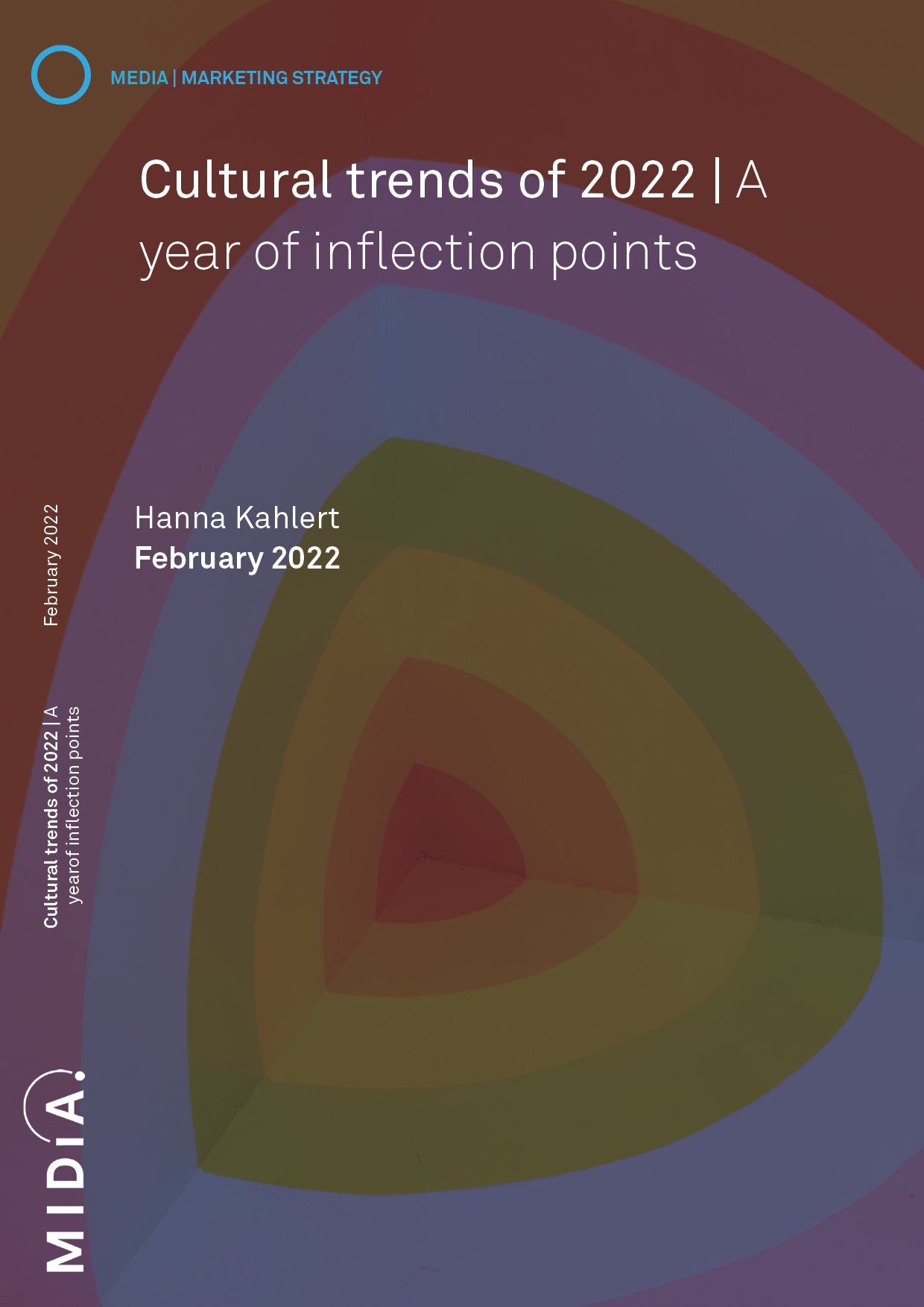Cultural trends of 2022 A year of inflection points

Get full access to this report and assets
If you are interested this report, or related reports such as Decoding the Digital Consumer An Analysis of the Digital Music Behaviour of UK Consumers, The Streaming Effect Assessing The Impact Of Streaming Music Behaviour and TV Show Fandom Measuring TV Shows’ Real Appeal get in touch today to enquire about a report bundle.
Digital-first life is now a bygone fact, from remote working to streaming as the default mode of entertainment consumption. Social media has evolved from its role as a personalised update feed, to a world of its own – encompassing basic creator tools from recording, to editing, to self-promotion. The digitalisation of skills sharing has enabled ever more people to take up the mantle of creator, rather than simply being a consumer. Ever-improving discovery algorithms are linking niche content to audiences of superfans, allowing localised content to spread globally, reaching levels of success that are impossible in a mainstream market. Fundamentally, digital-first life has prompted the need for a rethinking of the distinction between ‘real life’ and ‘online’. For digital natives, these realms have never been distinct, and with increased online familiarity and control, the rest of the world is catching up. 2022 will see the dissolution of traditional entertainment borders: between content categories, artists and audiences, and the worlds of online and ‘reality’.
Companies and brands mentioned in this report :Amazon Prime Video, BandLab, Bridgerton, Dark, Donda Stem, Facebook, Google, Instagram, McDonalds, Meta, Microsoft, Money Heist, NBA, Netflix, Pokémon GO, Queen’s Gambit, Rick and Morty, Snapchat, SoundCloud, Spotify, Squid Game, The Witcher, TikTok, Twitch, Vans, YouTube, Zoom
